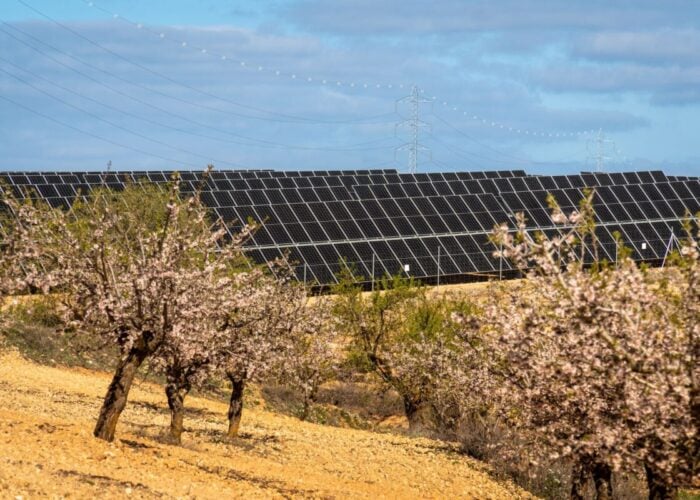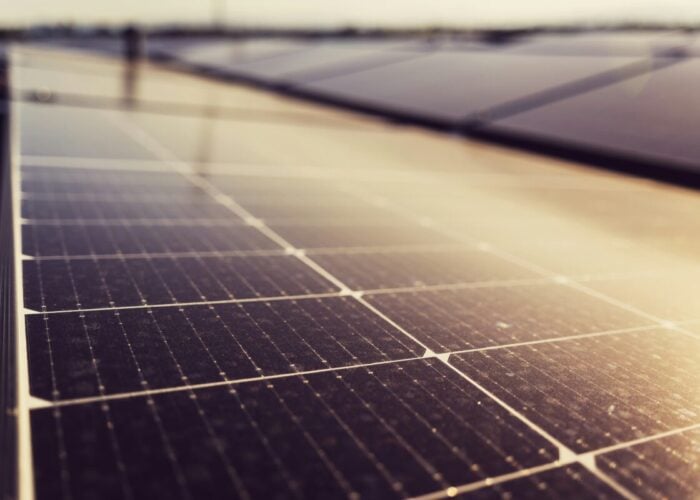US installer SolarCity has launched a new flat roof mounting solution for the commercial rooftop market that it claims could allow customers to fit 20% to 50% more panels on their roofs.
Zep Solar, the mounting systems company that SolarCity acquired for US$158 million in October 2013, has come up with ZSPeak, the new “snap-together” mounting product.
Try Premium for just $1
- Full premium access for the first month at only $1
- Converts to an annual rate after 30 days unless cancelled
- Cancel anytime during the trial period
Premium Benefits
- Expert industry analysis and interviews
- Digital access to PV Tech Power journal
- Exclusive event discounts
Or get the full Premium subscription right away
Or continue reading this article for free
The product is aimed at capitalising on the current trend in US commercial rooftop solar to fit east-west oriented installations. Fitting an east-west facing system can eliminate the spike in electricity generation at around midday which is typical of a south-facing system and allow for more hours of generation on any given day. Other providers including German mounting systems company Renusol, which was taken over by RBI Solar, have launched mounting systems specifically for east-west rooftops in recent months.
“Fundamentally, compared to conventional systems, this system enables businesses to install 20% to 50% more kilowatts on the roof. It’s an East-West facing system.
“East-west takes off the midday spike and gives you a broader peak. It allows you to, for example, downsize your inverter and ultimately have an inverter with higher utilisation,” Jack West, president and chief technical officer of Zep Solar told PV Tech.
“One of the key benefits of the east-west concept in combination with the way we designed our system is that we have an extremely dense layout structure in terms of panels per square foot. So just on a typical flat roof building in the US, if you compared it to a south facing system you can get about 20% more panels in the surface area. The jump in total kilowatts (generated) is so big that it completely overshadows any slight drop in efficiency.”
West went on to explain the 20% to 50% more productivity claim: “We get about 20% more kilowatts on a typical building. Then it turns out there’s a lot of buildings in the US where the roof itself, the roof structure is actually quite weak. There’s many buildings where you can’t add much PV, due to the weight loading of the building. The roof is basically designed only to be strong enough to hold itself up and you can’t add a lot more to it. So that’s the second big point – we’ve come up with a system that’s lighter than conventional systems, so on a lightweight building you can get up to 50% more kilowatts on a roof. So you could get 20% more on a standard roof and 50% more on a lightweight roof, like a warehouse.”
PV Tech asked what Zep and SolarCity thought made ZSPeak unique from other rooftop mounting systems. West said that the mounting system was designed with the ‘Zep Groove’ built into it, bringing over the company’s experience in the residential sector into the flat-roof market.
“With our first product, a residential product, the core concept was to think about having a fully integrated approach to the problem – we license our technology to PV manufacturers. It was basically a frame with a groove mounted in it, which allows you to snap the system together superfast. The groove allows you to not only have components that snap together to allow panels that sit next to each other, it also allows for auto-grounding, while the groove can carry other hardware like wiring and forms a platform to speed up the time of the installation process. That’s what we did on residential and a lot of that learning and technology is being poured over into the flat roof commercial space. It’s not a conventional east-west system, it’s a Zep compatible system.”
According to a SolarCity spokesman, SolarCity installers are able to make residential installations of Zep Groove products at twice the speed of some other types of mounting system. Zep and SolarCity also claim the new east-west system is designed to make PV installations more aerodynamic, reducing weight further.
“We used a lot of wind tunnel modelling. The panels effectively create a hill, so we use the way we orient the panels to create sort of a little air gap at the peak of the array. The upshot is that we get reduced lift, so that when wind blows across the array, we have a much lower co-efficient of uplift. In a penetration-free ballasted system it means a lot less weight,” said West. “So you can cover a much bigger piece of a typical lightweight roof.”
It can also be snapped on with a push of a button, “like a beach umbrella”, which West claims makes it “really easy to train people on because most people can put together a beach umbrella!”






